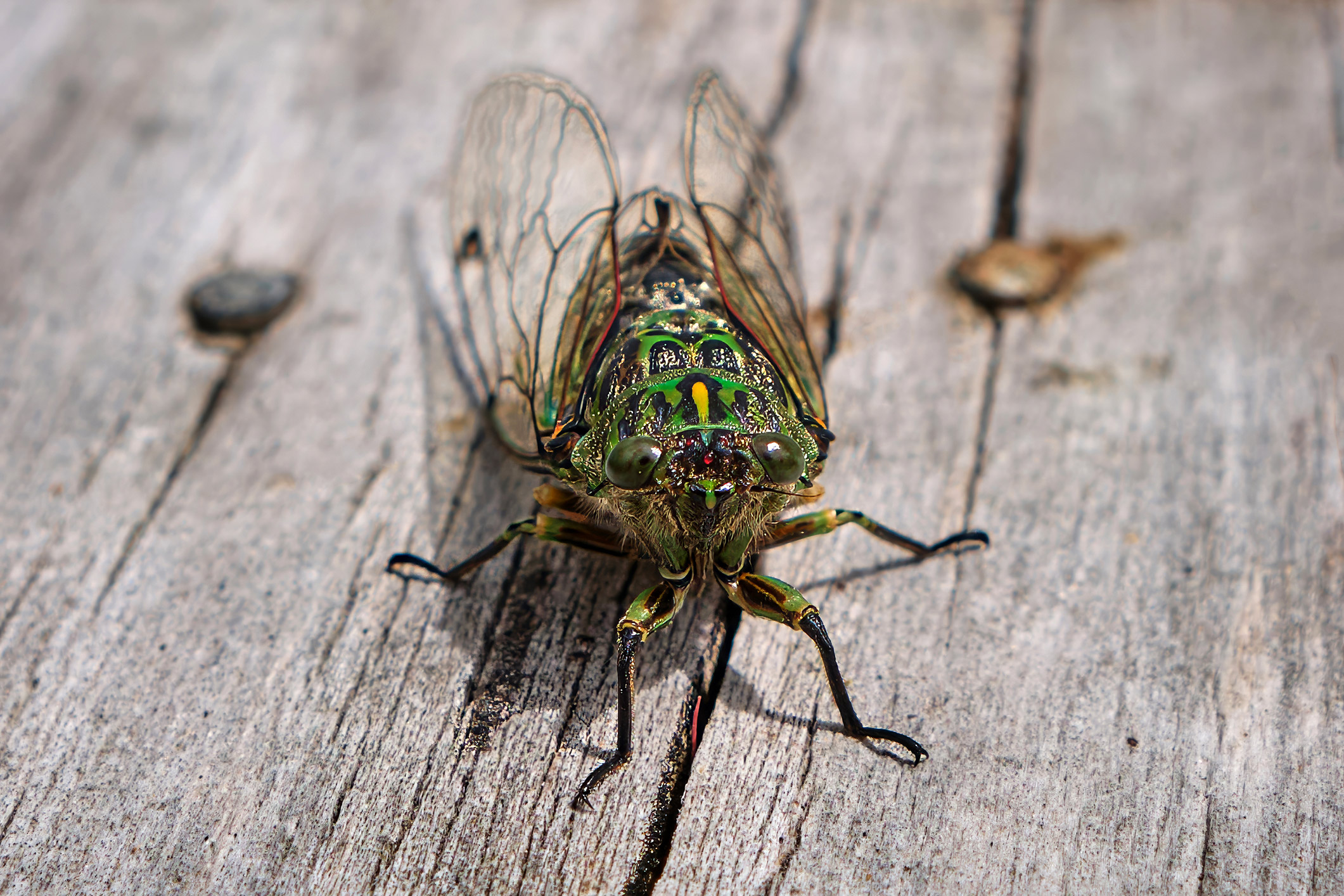 Photo by Geoff Stahl
Photo by Geoff Stahl
There are many different types of cicadas around the world, and New Zealand is home to dozens of species, the largest of which is the chorus cicada (amphipsalta zelandica). While this species holds the title of the loudest cicada in New Zealand, the loudest cicada in the world resides in Africa, recognized as the loudest known insect, capable of producing sounds up to 106.7 decibels at a distance of 50 cm [1].
A common misconception is that cicadas produce sound by rubbing their legs together, as crickets do. In reality, cicadas generate sound through the contraction of their tymbal muscles in their abdomen [2]. The most well-known cicadas are North American Magicicada species, often highlighted in the news for their extraordinarily long life cycles of 13 and 17 years [3].
One of the most fascinating aspects of periodical cicadas is their development underground for several years before emerging simultaneously. The mechanism behind their synchronized emergence remains partially understood, with the prevailing theory suggesting they gather chemical cues from the tree sap they consume.
In contrast, the New Zealand chorus cicada generally has a life cycle of 2 to 3 years, which is the most commonly cited range. While some sources mention up to 5 years, this is less typical and might occur in areas with cooler or more variable environmental conditions. In Wellington, these cicadas typically emerge in January and can be heard until approximately March. I have observed individuals as early as December and as late as April, but peak activity occurs during the height of summer into early autumn. During this period, the air is filled with the crackling hum of cicadas. On average, male cicadas sing for two to four weeks, mate, and then die. While female cicadas do not sing, they produce sounds by flicking their wings to signal their interest to males. Sir David Attenborough famously teased a male North American cicada by clicking his fingers, which the cicada mistook for the call of a receptive female [4].
After mating, the female cicada lays her eggs in tree bark and subsequently perishes. The cicada nymphs hatch from the eggs and fall to the ground, where they burrow into the soil, sometimes reaching depths of up to a meter [5]. Underground, they grow and feed on sap from plant roots until it is time to emerge. Upon emerging, the nymphs molt their exoskeletons, leaving behind discarded shells. Now fully developed adults, the cycle begins anew, with males singing to attract females.
Cicadas are often found basking in sunny treetops, as light influences their activity, triggering faster chirping and louder calls. They tend not to sing in darkness or during the night. An extraordinary behavior observed in chorus cicadas is their ability to synchronize their songs. Cicadas in close proximity coordinate their calls to amplify their volume, signaling to females: “this is the place with the most attractive males.”
1 "Brevisana brevis,” Wikipedia, last modified October 25, 2024, https://en.wikipedia.org/wiki/Brevisana_brevis.
2 "Tymbal,” ScienceDirect, accessed October 25, 2024, https://www.sciencedirect.com/topics/agricultural-and-biological-sciences/tymbal.
3 "Periodical Cicadas,” Wikipedia, last modified October 25, 2024, https://en.wikipedia.org/wiki/Periodical_cicadas.
4 "How Cicadas Produce Their Sound,” YouTube video, 5:14, posted by "Ant Lab," May 26, 2021, https://www.youtube.com/watch?v=tjLiWy2nT7U.
5 “Cicadas,” Te Ara - The Encyclopedia of New Zealand, accessed October 25, 2024, https://teara.govt.nz/en/cicadas/print.